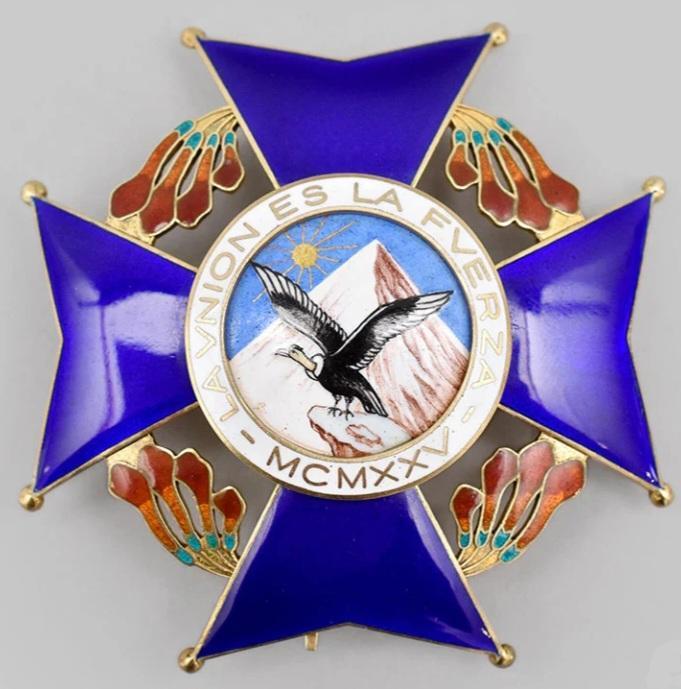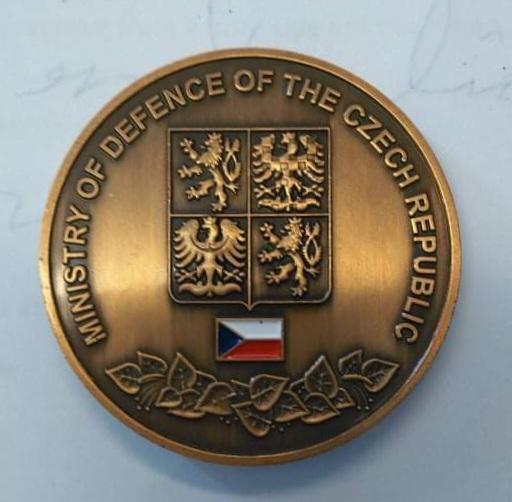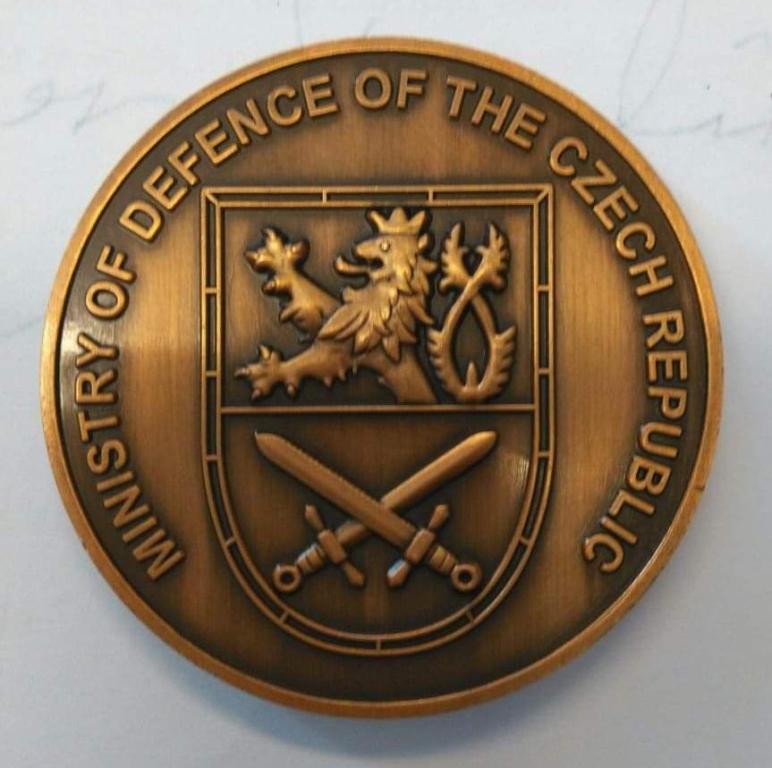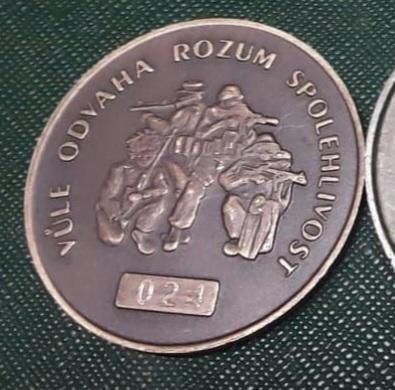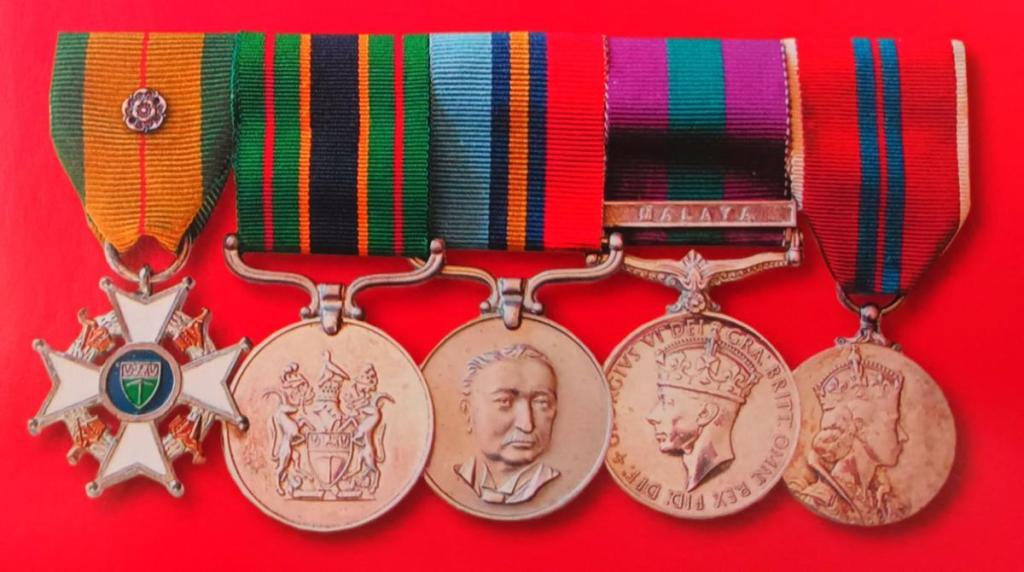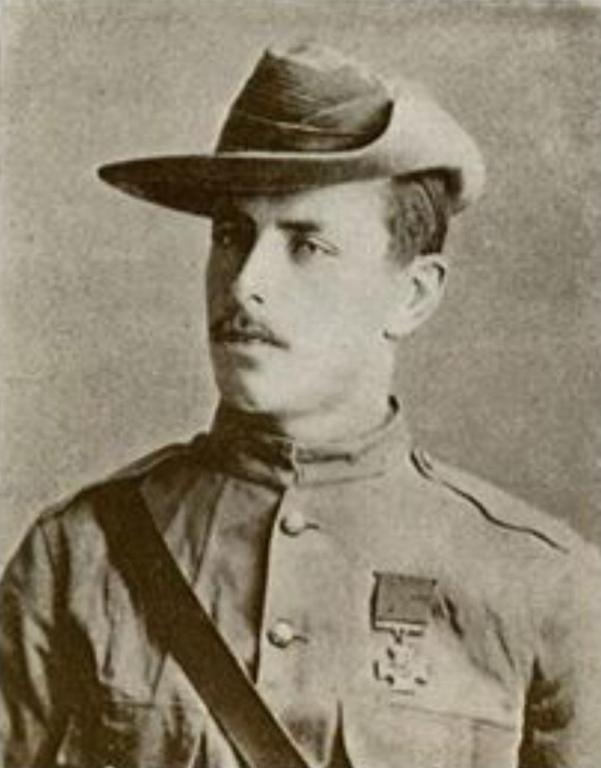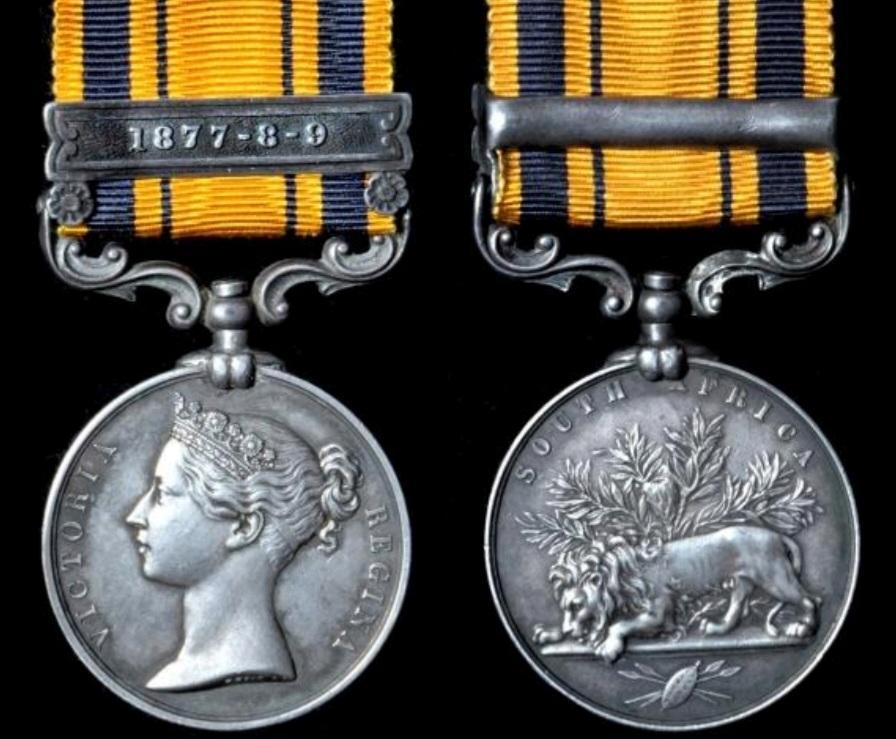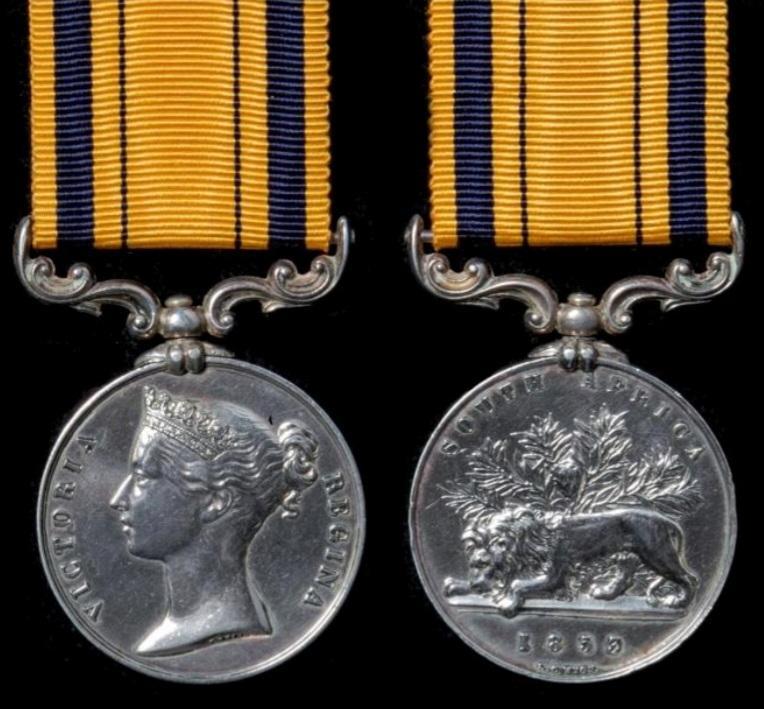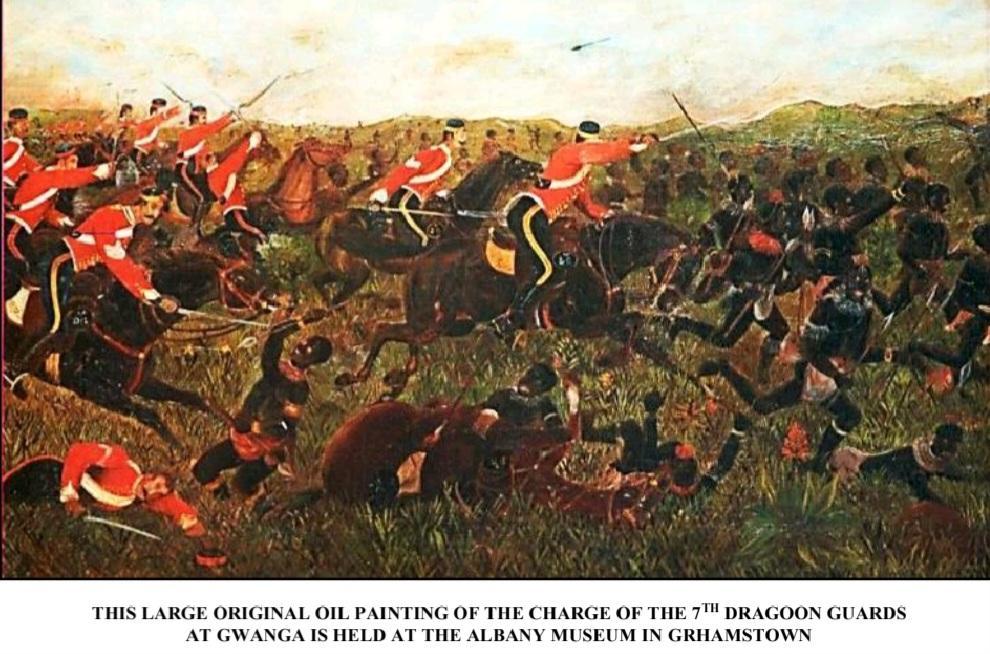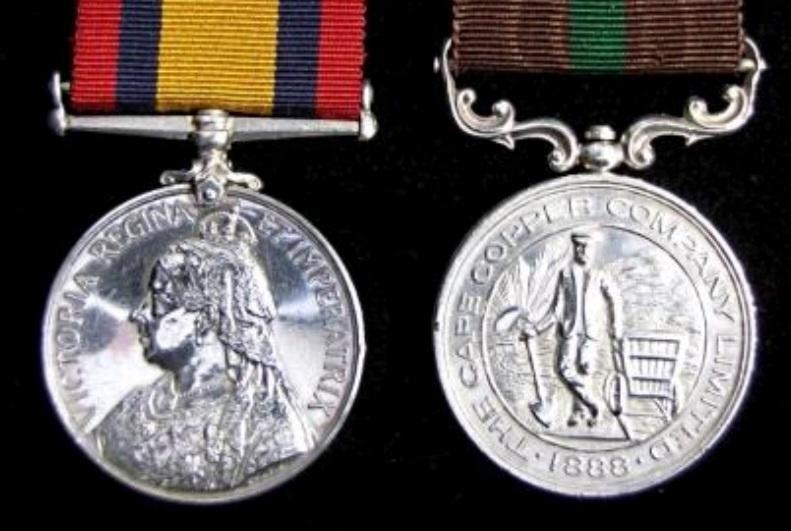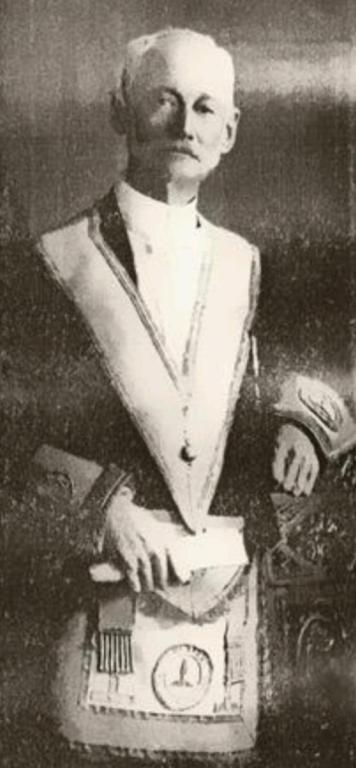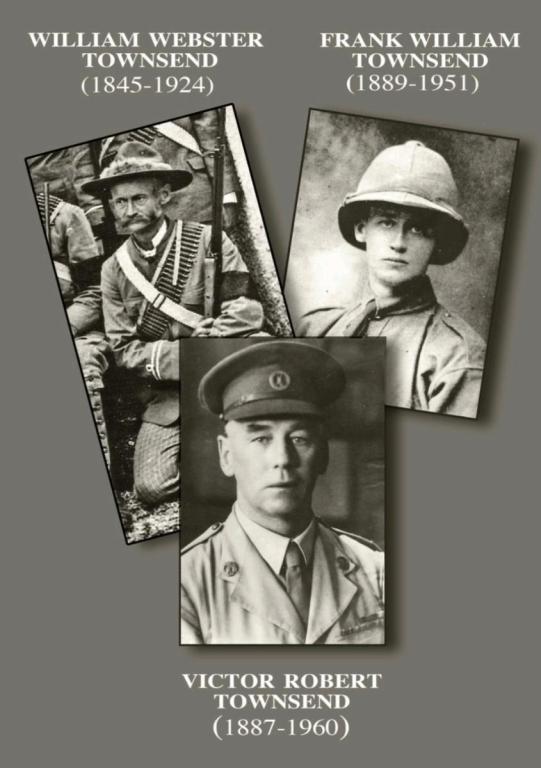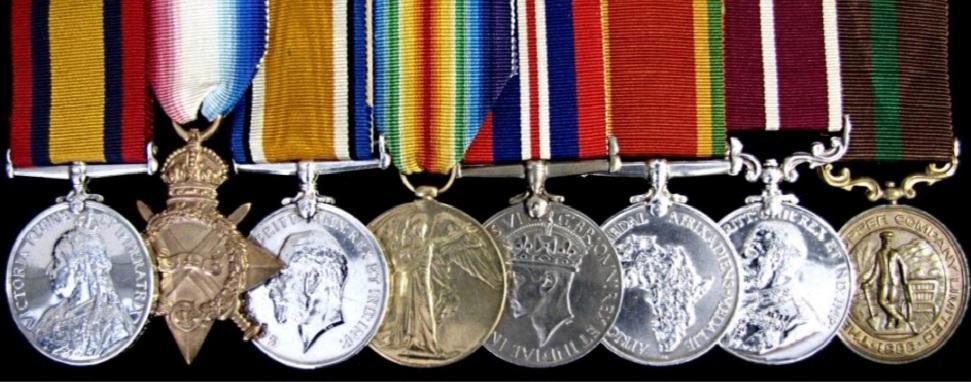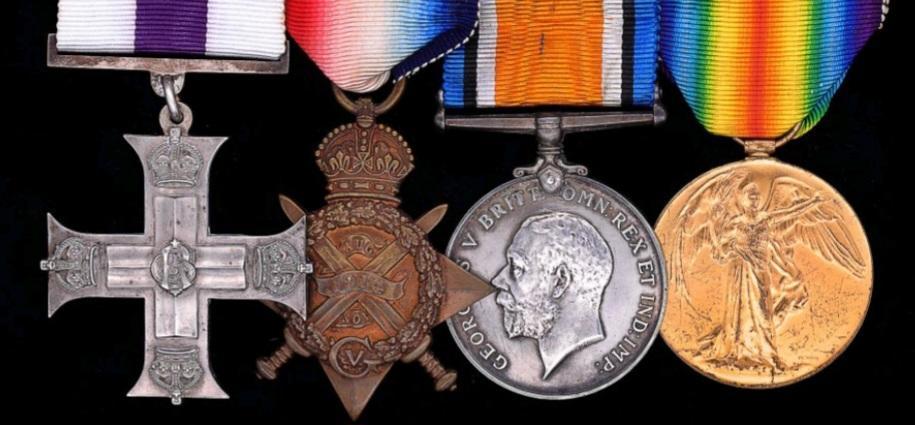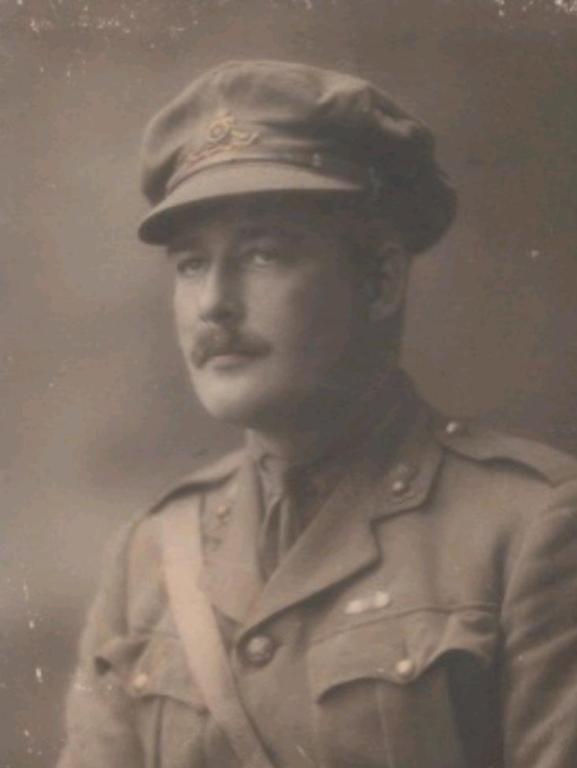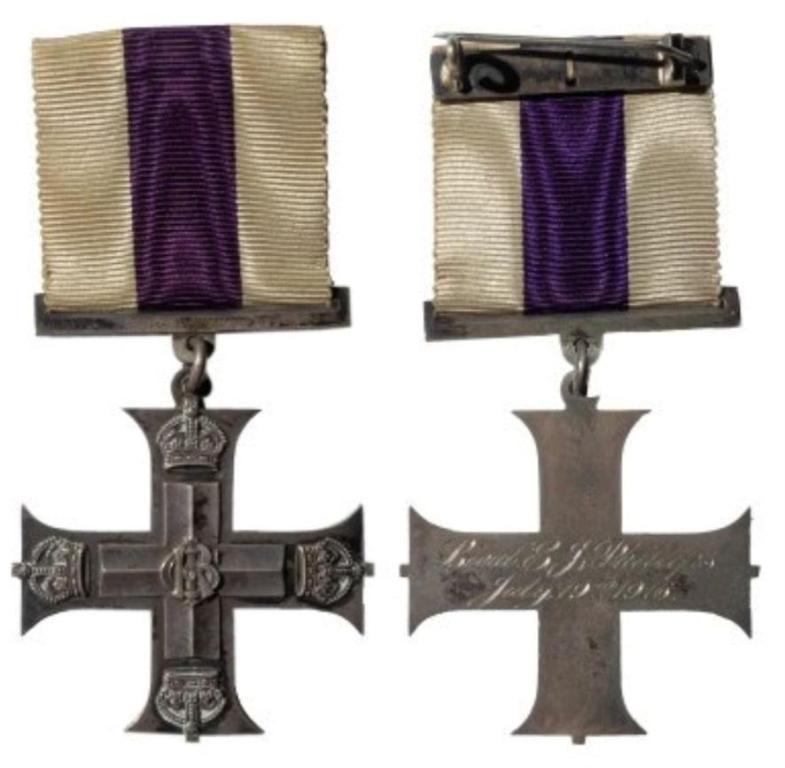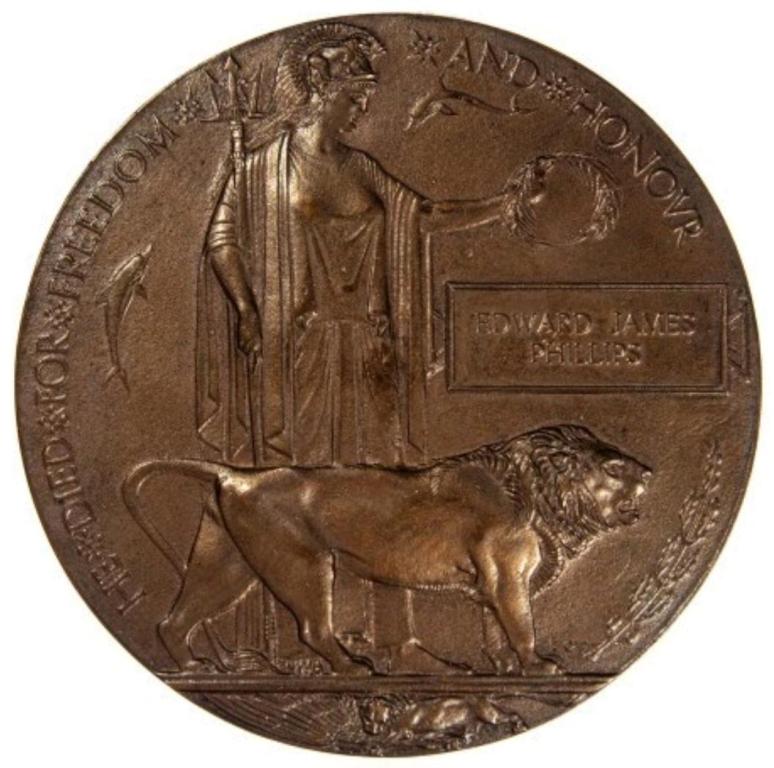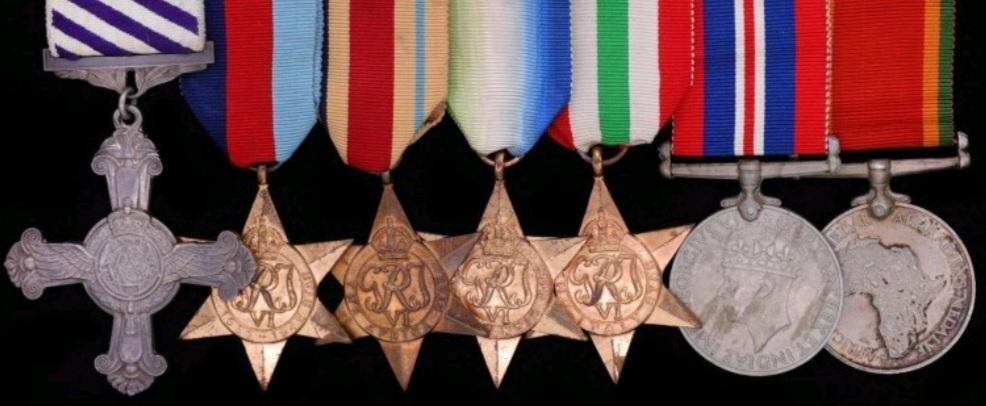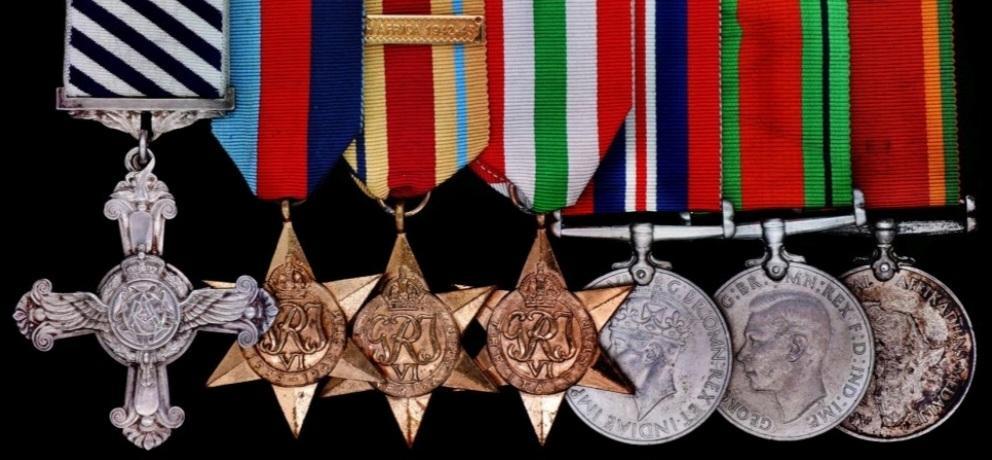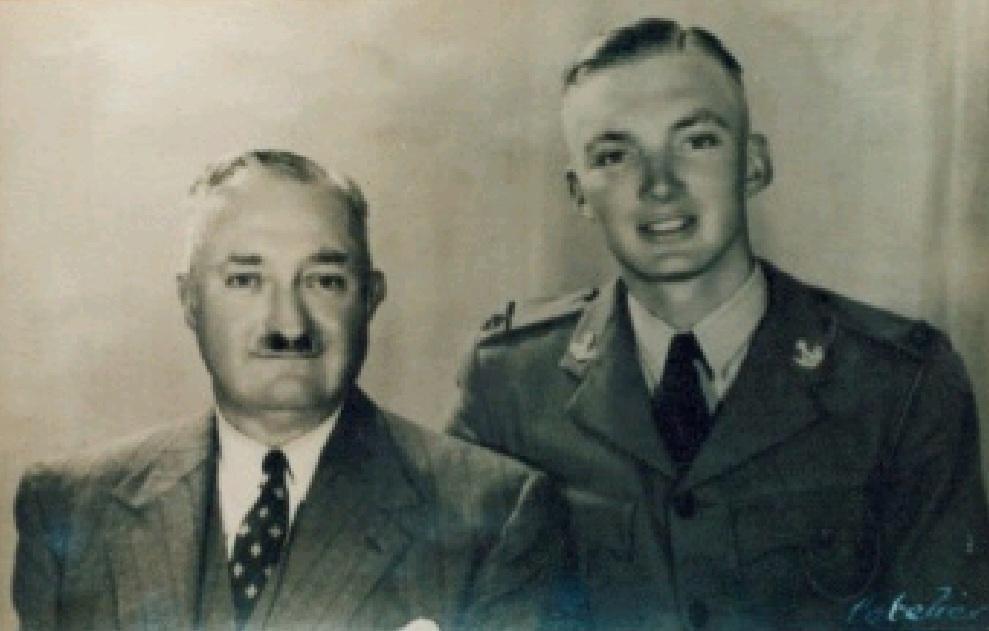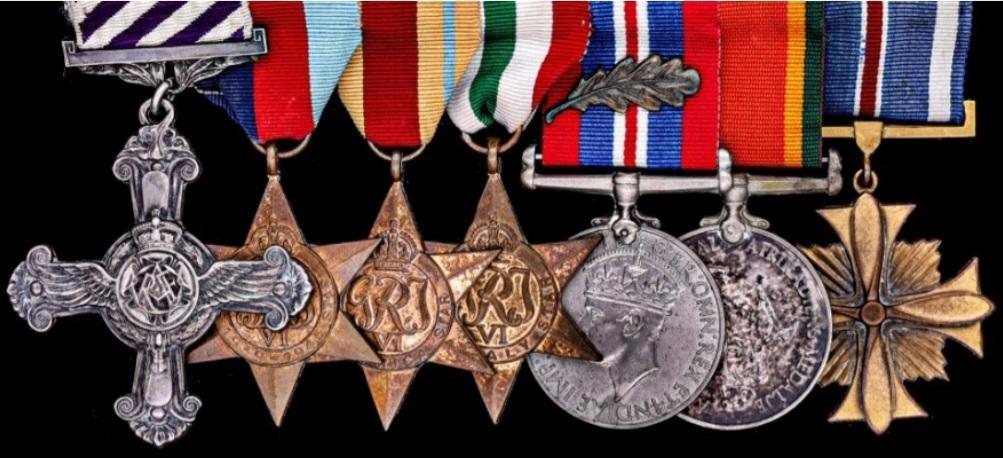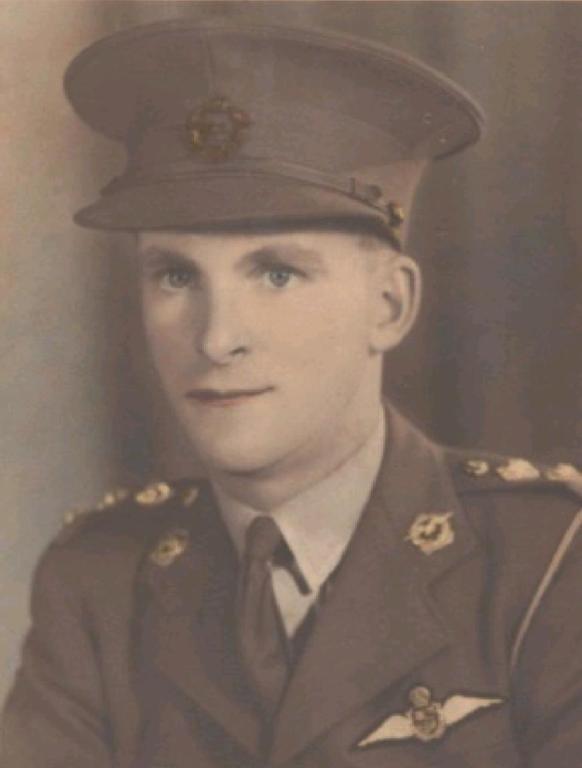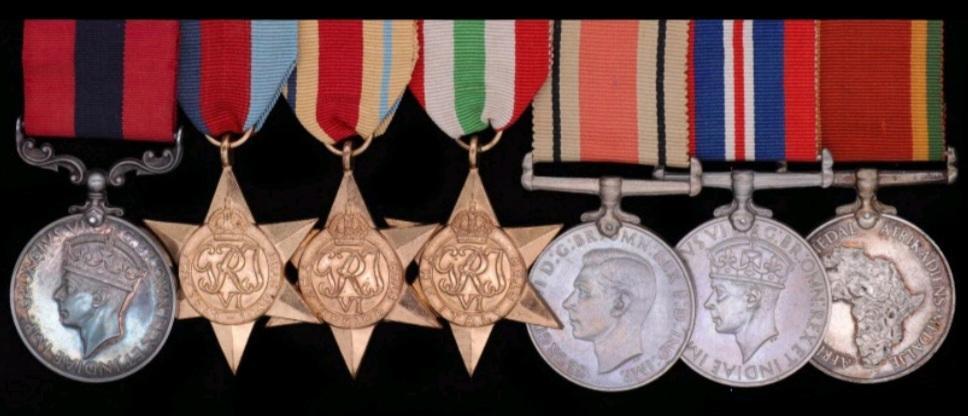-
Posts
1,593 -
Joined
-
Last visited
-
Days Won
14
Content Type
Profiles
Forums
Blogs
Gallery
Events
Store
Everything posted by archie777
-
Saw another beautiful Order on the site Emedals (Imperial Ordem da Rosa). Instituted October 17, 1829 by Dom Pedro I. In silver gilt, a six armed white enamelled cross with ball finials, affixed to a solid multi-rayed gilded plate with three pink enamelled roses on green enamelled laurels in each quadrant creating a wreath, the obverse medallion presents the hand-chiselled medallion of Pedro I, surrounded by a blue enamelled ring with the inscription AMOR E FIDELIDADE (Love and Fidelity), the reverse presents a single pin assembly, measures 54mm (w) x 52.9mm (h), weighs 37.4 grams, the edge of the white enamelled star near each ball finial and near the center are lightly engraved, the enamels are intact and the roses are in pristine condition, overall a extremely fine decoration of the utmost beauty. The Order of the Rose (Imperial Ordem da Rosa) was established in Brazil by Dom Pedro I on October 17, 1829, to commemorate his second marriage with Princess Amélie of Leuchtenberg on August 2, 1829. The Order was awarded to civilians, and military personnel, either Brazilians or foreigners, who distinguished themselves by their fidelity to the Emperor and by services rendered to the state.
-
1
-
Herbert Stephen Henderson was born at Hillhead, Glasgow, on the 30th March 1870. He went to school at Kelvinside Academy, Hillhead, Glasgow and served his apprenticeship with J&J Thomson Engineers, Glasgow before moving to Belfast where he worked for Harland and Wolff. In 1892 he left for South Africa and worked on the gold mines for two years before moving to Rhodesia (now Zimbabwe) where at 26 years old, he became the engineer of the Queen's Mine. When the Matabele rebellion broke out he joined the Bulawayo Field Force, initially as a scout, and served as a gunner in the Artillery Troop. Henderson volunteered earlier to ride from Queen's Reef Mine to Bulawayo for help and for protection was given a revolver and one cartridge, all that was available.Once he arrived, news was received in Bulawayo that seven white men were surrounded by the Matabele at Inyati, a post 24 kilometres north-east of the Queen's Mine and 80 kilometres north of Bulawayo. A small party of eleven men under Captain Pittendrigh of the Afrikander Corps rode out of Bulawayo just before midnight on Saturday 27th March 1896 to rescue the trapped men, first stopping at Jenkin's Store and then on to relieve Mr Graham, the Native Commissioner in Inyati. Finding all was quiet at Jenkin's Store, the party, now increased to nineteen, rode on through the bush to relieve Mr Graham. They were riding through the Elibaini Hills when they were attacked by a strong detachment of Matabele armed with assegais and rifles. Two men were wounded before the patrol managed to throw off the attackers and made for Campbell's Store across the Bembesi, where they learned that Mr Graham, Sub-Inspector Hanley and four miners had been massacred after holding out against overwhelming odds. As the area was swarming with warriors, mainly from the crack Ingubo Regiment, they decided to fortify the store. They had about two thousand rounds of ammunition and felt that they could withstand a night attack. Two men, Troopers Fincham and Mostert, were sent back to Bulawayo by another route for reinforcements, and got away safely to Bulawayo. The same night, Sunday 28th March, a second stronger patrol, under the command of Captain MacFarlane, left Bulawayo to effect a rescue. Their numbers consisted of thirty horsemen; fifteen from the Afrikander Corps under Commandant van Rensburg and Captain van Niekerk and the remainder from the Rhodesia Horse volunteers. Riding through the night with only a brief halt at Queen's Reef Mine, they pushed on to Campbell's Store. Heading the patrol as scouts and advance guards were Troopers Celliers and Henderson. In the early hours of Monday the 29th, the patrol was attacked in dense bush about 8 kilometres from Campbell's Store. The Matabele opened fire at close range, and although the darkness and thick bush favoured the Matabele, the accurate return fire from the patrol enabled them to fight their way through the ambush. A running fire began which lasted about 30 minutes, before the patrol rode across the open veld and dashed up the river bank to the store to the relieved cheers of the besieged men. It was only then that they realised that Troopers Celliers and Henderson were missing. Celliers and Henderson had been ahead of the main body when the Matabele sprang the ambush. Celliers was shot through the knee and his horse hit in five places. Subjected to heavy fire and cut off from the main party, the two men swung their horses off the track and headed into the dense bush. After a wild gallop lasting a few minutes they reined in their horses to hear sporadic firing above the shouting of the Matabele. Celliers' horse finally collapsed from its wounds. Henderson dismounted, lifted the injured Celliers onto his own horse and led it away from the noise of battle. Celliers, in great pain, and suffering from loss of blood, appealed to Henderson to leave him as it would be suicidal to try to walk to Bulawayo through rough country thick with marauding bands of fierce Matabele; but Henderson refused to listen. He led the tired horse into thick bush, where he treated the injured man's wound as best he could. They had no food with them, but managed to catch some sleep although they were uncomfortably close to the Matabele. For two days and two nights Henderson trudged through the bush leading the horse carrying his injured companion. Both were suffering from hunger and Celliers was in intense agony. Tuesday the 30th March was Henderson's birthday and he said later, that did he want to spend another birthday like that again as he weaved his way through the Matabele Impis which encircled Bulawayo. On Wednesday morning, a bone-weary Henderson walked into Bulawayo with his horse and injured companion. Celliers had his leg amputated, but died in hospital on the 16th May 1896. Albert Henry George Grey, 4th Earl Grey, Administrator of Rhodesia (now Zimbabwe) at a general parade on the 3rd June, referred in his address, to Henderson's gallant conduct and brave feat. Captain MacFarlane, the leader of the patrol, wrote a letter to the Administrator of the British South Africa Company, recommending Henderson for the award of the Victoria Cross. As all communication with Salisbury had been cut, the letter was forwarded to Cape Town and from there to London. The award of the Victoria Cross, the first won on Rhodesian soil to Henderson was gazetted on the 7th May 1897. The citation was drawn from the letter written by Captain MacFarlane. The London Gazette of 7th May 1897 states: “On the morning of the 30th March, 1896, just before daylight, Captain Macfarlane's party was surprised by the natives. Troopers Celliers and Henderson, who formed part of the advanced guard, were cut off from the main body, and Celliers was shot through the knee. His horse also was badly wounded and eventually died. Henderson then placed Celliers on his own horse, and made the best of his way to Buluwayo. The country between Campbell's Store, where they were cut off, and Bulawayo, a distance of about thirty-five miles, was full of natives fully armed, and they had, therefore, to proceed principally by night, hiding in the bush in the daytime. Celliers who was weak from loss of blood, and in great agony, asked Henderson to leave him, but he would not, and brought him in, after passing two days and one night in the veldt without food.” Tpr Henderson was decorated with the Victoria Cross on 4 November 1897 by Sir Alfred Milner, High Commissioner for Southern Africa and Governor of the Cape Colony Milner at the opening of the Bulawayo Railway on the 4th November 1897. Henderson remained in the gold-mining industry for some years and was, at one stage, the timber contractor to the Globe and Phoenix goldmine and later prospected for the German Administration in South West Africa. During the First World War, he was not permitted to leave Rhodesia on active service, as gold-mining was considered an essential service. In 1924 he married Helen Joan Davidson. They had two sons, Alan Stephen Accra in 1926 and Ian Montrose in 1927. For the duration of the Second World War, Henderson had all profits from the Prince Olaf Mine given to the War Fund. He died of a duodenal ulcer on the 10th August 1942 and is buried in the Bulawayo cemetery, his grave number is 887; his medal was donated by his family to the National Army Museum in London.
-
3
-
South Africa General Service Medal 1877-79 - Lieut: J. Maxwell Natal Native Contgt Shortly after the conclusion of hostilities in Zululand John Maxwell drafted his reminiscences. His original manuscript was donated to the University of Cape Town many years ago and was subsequently edited and published by the University. The basic outline of these Reminiscences are set out in the Introduction to the published document and reads as follows: INTRODUCTION The manuscript of John Maxwell's Reminiscences of the Zulu War was donated to the University of Cape Town Libraries by Mrs. Pamela Strasheim, whose grandfather Hermann Bolus, elder son of Dr. Harry Bolus, the eminent botanist, married Louisa Maxwell, John's niece. It seems that the manuscript was passed to the family of John's younger brother, Thomas (1840-1914). The manuscript covers thirty pages of ruled foolscap and is written partly in lead pencil and partly in blue pencil. On the first page someone has noted in ink "Written by Uncle John Maxwell". It is thought that the narrative was written for publication, as a similar version appears in the Christmas Number of the Natal Witness for 1884. There is a typescript narrative of the same incident by 'J.M.' in 'Reminiscences of the Zulu War, 1879’, by various authors, compiled in two volumes by Dr. Killie Campbell. The text of the typescript is not identical to that of the manuscript, possibly a result of being edited before publication in the press. The text published here is that of the original manuscript. John Maxwell was born in Liverpool, England on 11 September 18372 and came out to Natal as a boy of 14. His father, Commander Francis Severn Maxwell, R.N., after serving with gallantry in the Mediterranean during the Napoleonic Wars, apparently decided to try cotton growing in Natal at the age of 61. As a retired naval officer he would have been entitled to a free grant of land. Commander Maxwell, his wife, three sons William, John and Thomas, and two Irish servants, set sail from Liverpool on board the brig “Wilhelmina” on 16 October 1850. They arrived off Port Natal early on the morning of 7 January 1851. By 1855 Commander Maxwell owned 695 acres of land near Besters Hoek in the County of Pietermaritzburg and in August 1855 was listed as living at 33 Burger Street, Pietermaritzburg. He is described as a Gentleman and Landowner. Commander Maxwell was present at a meeting in Pietermaritzburg on 15 January 1855 to discuss the establishment of a Volunteer Cavalry Corps and seconded the proposal that "a Mounted Volunteer Corps be established for the County of Pietermaritzburg". This resulted in the formation of the Natal Carbineers and all three Maxwell brothers are listed as being members of the Maritzburg Troop on various occasions during the 1850s and 1860s. It seems likely that John and Thomas went to the Eastern Cape in the 1870s. John was a member of Brabant's Corps in September 1878 and would therefore have fought in the Ninth "Kaffir" (Frontier) War of 1877-78. John Maxwell joined the Natal Native Contingent in King William's Town on 12 November 1878, where Commandant Rupert La Trobe Lonsdale was recruiting white officers and N.C.Os. They left King William's Town on 20 November on a special train for East London, and sailed on the S.S. Nubian for Durban on 21 November. They arrived in Durban on 23 November and left the next day for Pietermaritzburg. Maxwell was a lieutenant in the 2nd Battalion (commanded by A. W. Cooper) of the 3rd Regiment N.N.C. (commanded by Lonsdale). Each battalion of the 3rd N.N.C. consisted of 10 companies; each company consisting of nine whites i.e. one captain and two lieutenants (who were mounted), and six N.C.Os, as well as 100 Blacks, six being N.C.Os. The 2/3rd N.N.C. formed part of the Number Three or 'Centre Column' under the command of Brevet Colonel R. Glyn, which was to cross the Natal border into Zululand at Rorke's Drift and move eastwards to Ulundi, Cetshwayo's chief kraal. The Column consisted of N Battery 5th Brigade Royal Artillery; two squadrons Imperial Mounted Infantry; two battalions H.M. 24th Foot; one squadron Natal Volunteers including Natal Carbineers, Newcastle Mounted Rifles and Buffalo Border Guard; one squadron Natal Mounted Police; the 1st and 2nd battalions of the 3rd Natal Native Contingent and one company of Native Pioneers. Lieutenant-General Lord Chelmsford, Commander in charge of forces in South Africa, and his staff accompanied the Column. Maxwell's narrative begins on 21st January 1879, after the Column had left Rorke's Drift (where a small force had been left on guard); crossed into Zululand; fought a brief engagement near Sirayo's kraal and established a camp at Isandhlwana. Maxwell's company was part of the force under Major Dartnell and Comdt. Lonsdale sent out by Lord Chelmsford on 21st January to reconnoitre ground to the south-east of Isandhlwana, as reports of Zulus near Matyana's stronghold had been received. When a large body of Zulus was sighted at sunset near Isipezi Mountain, Dartnell decided to send for reinforcements and bivouac there for the night. Early on the morning of 22nd January, Lord Chelmsford and Colonel Glyn left Isandhlwana with a force to join Dartnell. They remained out all day in spite of reports that a Zulu force was attacking the camp. Maxwell describes the return to Isandhlwana after the Zulus had overwhelmingly defeated the British and Colonial troops left in camp; and the march to Rorke's Drift the next morning where a small group of defenders had held the depot against a Zulu force commanded by Dabulamanzi on the night of 22nd January. Maxwell goes on to describe the finding of the Queen's Colour of the 1/24th Regiment, and ends his narrative with a description of visits to Isandhlwana on 14th March and 21st May. Maxwell left the N.N.C. on 29th April and took over No. 1 Native Reserve Levy at Umsinga on 30th April. There is a note in the manuscript to the effect that Maxwell returned to Umsinga on 19th July, presumably being involved in border defence only and not in any subsequent battles. Little has been discovered about Maxwell's later career. He died in Eshowe on 26 December 1905 at the age of 68 and is buried there. EDITORIAL METHOD: Any alterations to the original text have been made in order to clarify and make it more readable. Maxwell's erratic punctuation and lavish use of capitals has been brought into line with modern usage as far as possible. Abbreviations have in most cases been expanded. Minor grammatical and spelling errors have been corrected, but Maxwell's spelling of proper names has been retained and where necessary the correct form is explained in a note.
-
2
-
Serjt. D. Dinimus Cape Mtd. Rifles This man is one of only 46 out of the 10210 recipients of this medal to have served in all three wars of 1834-5, 1846-7 and 1850-3, for which the medal was awarded. Dinimus enlisted in the Cape Mounted Riflemen at Cape Town on 26 April 1831 at the age of 24. He served the next 22 years on the Eastern Frontier at Grahamstown, Fort Beaufort, and at many of the outlying forts such as Wiltshire, Peddie, Brown, Albert, etc. Discharged at Grahamstown on 30 April 1853 and granted a pension for life of 11 3/4 pence per day (WO/12/10574). In the War of the Axe 1946-7 some 40 warriors of Chief Tola in March 1846 overpowered the escort and released a native prisoner being taken to Grahamstown for trial for stealing an axe at Fort Beaufort. A Hottentot prisoner, to whom the native was manacled, was killed. War was formally declared on 31 March 1846 following the failure of Chiefs Sandile and Tola to return the prisoner or to surrender the murderers. The major action of the war took place near the Gwanga River crossing of the road between Fort Peddie and King Williams Town on 8 June 1846, when a troop of the 7th Dragoon Guards and a squadron of the Cape Mounted Riflemen clashed with Chiefs Siyolo and Umhalla and 600 natives. It was estimated that 400 natives were slain or died of wounds. Sergeant Dinimus was stationed at Fort Peddie at the time so he probably was one of the C.M.R. men involved in this famous cavalry charge. On 20 December 1852, 119 men of the C.M.R. were involved in the Battle of Berea against Chief Moshesh in Basutoland. The force of 2 500 men under the command of Major-General George Cathcart, was the largest British Army to take the field in South Africa since Blouberg nearly half a century before, when Britain took back the Cape from the Dutch. Detachments from four infantry battalions, 12th Royal Lancers, C.M.R. (250), Royal Artillery and Sappers & Miners made up the force. In the final attack 119 men of the C.M.R. participated, out of a combined total force of 400. Nearly a tenth of the force were killed; 32 in all, including 27 of 12th Lancers and 2 from the C.M.R. The muster rolls of the C.M.R. for November/December 1852 record Dinimus as serving in the field, so he could have been with Cathcart's force. It was here during the Battle of Berea that while fighting alongside the 12th Lancers that the CMR earned the enduring respect of their military colleagues. Perhaps Dinimus was one of those who was in the thick of the fighting. Mackay in his Reminiscences of the last Kaffir War (sic) records these events as follows: “The battle of Berea now began, and tens of Lancers and C.M. Rifles were ordered to charge squadrons of mounted Basutos. Captain Oaks, 12th Lancers, Major Armstrong, C.M.R., Captain Carey, C.M.R., Ensign Simkins, C.M.R. and a few troopers (about thirty-six in all), observing cattle moving away to their right, galloped off in that direction, and were returning in high glee with their booty, when to their dismay they found their line of retreat cut off by about two thousand of the enemy. This small party was nearly annihilated. The officers called out to the men that it was death or glory, and the men nobly responded to the sentiment; hastily forming themselves compactly for a deadly charge at the masses of swarthy horsemen in their front, they waived their swords and lances in the air, and with a wild hurrah charged at the irregular ranks of the enemy. The cowardly Basutos fled right and left from the few gallant Britons, leaving an open space for their retreat, but sent a destructive irregular fire after them. They continued their retreat, followed by numerous enemy, and when they began their decent down the rocky pathways, a heavy cross-fire was kept up at them by numbers of the enemy who had taken cover behind rocks and stone walls. Twenty of this party were left on the heights dead, besides those who were wounded.”
- 1 reply
-
1
-
Hi Megan, Pleasure and I'm glad for you. If you need anything else, just let me know. Regards Archie
-
Frank William Townsend was born in Namaqualand in 1889. He was the third son of William Webster Townsend. Frank Townsend served as Private No. A6401 with the 2nd Infantry (Duke of Edinburgh’s Own Rifles) during the campaign in German South West Africa from 6 October 1914 to 31 July 1915. He subsequently re-attested at Potchefstroom on 17 December 1915 for service with 9th S.A. Infantry of the S.A. Expeditionary Forces in German East Africa. Discharged owing to ill health at Wynberg Camp, Cape Town 20 February 1917. His occupation is given as clerk. Accepted for the Flying Corps in May 1918 but failed to pass the medical test. He was employed for many years by the Standard Bank in South Africa and in Rhodesia, and died at Cape Town in 1951.
-
QSA no bar Capt: W.W. Townsend. Namqlnd T.G.; O’okiep Cape Copper Company Medal (silver) impressed “W.W. Townsend” The issue of QSA medal is confirmed on the relevant medal roll of the Namaqualand Town signed by Major J.L. Dean at O’okiep on 8 May 1903. This very rare Cape Copper Company medal in silver is one of only about ten known to exist. The recipient had three sons serving in the Namaqualand Town Guard. The eldest was wounded. Of the ten known named silver Copper Company medals, this may be the only father and son to receive both, a silver and a bronze medal. William Webster Townsend was born at Mowbray, Cape Town in 1845. He was employed as the Chief Cashier of the Cape Copper Company at O'okiep in Namaqualand. William Townsend was commissioned as a Captain in the Namaqualand Town Guard on 22 January 1901 (confirmed Cape Colony Field Order 435, dated 13 January 1901) and commanded No. 3 Position both before and during the Siege. Kieran and Burke record that the Town Guard manned the defence works at O'okiep and Nababeep, for many months carrying out piquet, guard, escort and other duties. They successfully defended the town against Boer forces under Smuts, van Deventer and Maritz for the 30 days from 4 April 1902 until 4 May 1902. It was during the Siege that Smuts was given a Pass to attend the Peace negotiations at Vereeniging which finally led to the declaration of the end of hostilities on 31 May 1902. William Townsend retired from the Cape Copper Company in 1919 and died a few years later at Cape Town on 11 November 1924 (Deceased Estate file Cape Town MOOC 6/9/2701 ref 6068). He lies buried in the Maitland Cemetery in Cape Town (ref 21278A). His wife Rhoda Kearns, whom he married in Cape Town in about 1883, long outlived her husband and died on 8 April 1945. Rhoda was born on 20 January 1859 and she and William had ten children – no less than six daughters and four sons. Three of his sons also served in the Town Guard, and a fourth son, Frank Webster Townsend, was too young to serve but did so later in World War I in German South West Africa and German East Africa. The three older sons were: 115 Sergt. William Frederick Worcester Townsend (he seldom used the name Frederick, and his name appears on the medal roll as W.W. Townsend) who was slightly wounded defending Fort Shelton on 22 April 1902. (Deceased Estate file Cape Town MOOC 6/9/16317 ref 4153/49) 47 Corpl. James Nolloth Townsend, born 3 July 1877 who was employed on outpost duty prior to discharge (Deceased Estate file Cape Town MOOC 6/9/24479 ref 795/58). His QSA medal was issued as 655 John N. Townsend with the Namaqualand Border Scouts. 868 Pte. Victor Robert Townsend who also served in both WWI and WWII. He was awarded the MSM during WWI. The youngest son Stanley Wrentmore Townsend was too young to serve at O’okiep, but did serve with the 2nd Infantry (Duke of Edinburgh’s Own Rifles) in German South West Africa 1914-15, and with the 9th S.A. Infantry in German East Africa 1915-17 during WWI. In the case of William Webster Townsend there is much to be gained in addressing this task as his family made a significant contribution to the early British life in Cape Town and in a subtle way contributes to the story of the medal for the Defence of O’okiep. William’s uncle, Thomas Lock Townsend, was his father’s half-brother. One might say: “So what?” Numerous Cape references record that he was the first British silversmith who emigrated to the Cape in 1815. A few years later William’s father, John Townsend, who was born in Kent in about 1800, arrived in the Cape in 1821 on the ship Duke of Marlboro and joined his half-brother and together, they operated the leading silversmith business in Cape Town at that time. The abolition of slavery of course resulted in the payment of significant sums to slave owners and much of the silver coins they received in compensation were subsequently turned into silver tableware and other Cape Silver which are keenly sought after collectables today. David Heller describes John Townsend “as one of the top five Cape silversmiths”. The Townsend brothers were ingenious business men, their businesses at one time extending to a hotel and auctioneering business in addition to being goldsmith, silversmith, jeweller and watchmaker. It would seem also that in order to satisfy the wishes of the English clients they imported a series of silver hall marking tools which today account for most of the so-called forged or pseudo British Hallmarks which were somewhat prolifically stamped on items of Cape Silver which were produced in their workshops. William’s father John Townsend married Elizabeth Bauman (born 1810) at St. Georges Church in Cape Town on 10 July 1826. Their marriage produced 10 children, William Webster Townsend being their youngest child. Unfortunately, the businesses conducted by the two brothers did not prosper and when John’s half-brother died in 1849 he left insufficient estate to cover his funeral costs. John Townsend had also became embroiled in a number of court cases, mostly due to bad debt, and following soon after his wife Elizabeth’s early death on 26 September 1846 and his brother’s death in 1849 he stated that he had "insufficient means to support his 10 children". He moved to O’okiep in Namaqualand in 1852 as Manager of the Spektakel Copper Mine, but was insolvent by 1868. After the death of his first wife he remarried twice before his death at Mr. Heath’s house in O’okiep on 14 February 1875. He reportedly fathered no less than 24 children by his three wives, the last at the age of seventy four years, and was buried in the cemetery at Springbok. William Townsend was a keen Mason and had a lifetime of membership of units of the Grand Lodge of England. He was first initiated in the Namaqua Lodge No. 1023 by his father, the Worshipful Master, in 1866. This Lodge ceased to exist by 1870. The Phoenix Lodge of Namaqualand was inaugurated in 1885. William was one of fifteen Foundation Members and served as the Secretary and Treasurer and by 18 November 1886 he had been advanced to the position of Worshipful Master. Numerous details referenced to him are included in the Centenary Celebration Souvenir booklet of the Phoenix Lodge. At Grand Lodge District level William served as Senior Grand Warden 1903, Grand Registrar 1899, Grand Standard Bearer 1898, Grand Pursuivant 1887 and as Grand Steward 1886. In 1919 he was presented with an illuminated address and a cheque conveying the appreciation of his many years of distinguished service and the affection and esteem in which he was held by all brethren. This illuminated address was presented to him on his retirement and his leaving the Lodge after 34 years. Interestingly the names of the following known recipients of the Cape Copper Company medal in silver also appear as office bearers of the Phoenix Lodge, namely H.G.S. Willman, P. Thompson, J. Burrows and Dr. R.N. Howard
-
QSA no bar 868 Pte V. Townsend. Namqlnd T.G.; 1914-15 Star Pte V.R. Townsend. Brands F.S Rfls.; BWM; AVM (Bil.) A/2ndC/W.O. V.R. Townsend S.A.M.C.C.; WM; ASM 120264 V.R. Townsend; Meritorious Service Medal (MSM) (Geo.V) C.M. 203 Pte A.C.S. Mjr V.R. Townsend S.A.M.Cyc.Cps., O’okiep Cape Copper Company Medal (bronze) impressed: “V. Townsend.” Victor Robert Townsend was born in Namaqualand on 15 May 1887. He was a just a boy of only 14 years of age when he earned his QSA and Cape Copper Company medals in the defence of O'okiep in 1902. He must have been one of the youngest recipients of the QSA, and his service may be compared to those boys of the Mafeking Cadet Corps under Baden-Powell in that other famous siege. He served in the Namaqualand Town Guard in the Boer War. The Town Guard was employed to man the defence works at O'okiep and Nababeep, for many months carrying out piquet, guard, escort and other duties. For 30 days however, from 4 April 1902 they successfully defended the town against Boer forces under Smuts, van Deventer and Maritz. The war and the siege of O'okiep ended with the Peace of Vereeniging on 31 May 1902. During World War I Victor Townsend served as a Private in Brand's Free State Rifles during the campaign in German South West Africa from 22 October 1914 until 4 July 1915. He subsequently reattested on 31 January1916 for service with the S.A. Motor Cycle Corps in German East Africa. He was promoted Company Sergeant Major on 5 August 1918 and was released from service 12 February 1919. It would appear that at some time during his service in German East Africa that he was captured and held as a prisoner of war, as a note with his papers reads: “To O.C. German Forces. Will you be so kind as to give Cpl. Townsend medical treatment, or have him sent into our Forces. You have the name of looking after all prisoners very well. Kind regards. Why don’t you chuck up the war here as it is only a waste of money and lives; take my tip and chuck it up.” The signature is unknown. It is not known when he was released however his release was most probably due to the fact that the German forces in East Africa had very limited facilities to hold Prisoners of War as captives. He was subsequently awarded the Meritorious Service Medal for his noteworthy service in East Africa. The recommendation for this award which was announced in the London Gazette on 3 June 1919 was made by Major Duncan McMillan, the Officer Commanding the S.A.M.C.C, and reads as follows: “For general good work over 2½ years in the field. His patrol work has been fearless and his information reliable”. This MSM is one of only 308 awarded to South Africans during World War I. Soon after the outbreak of WWII he once again attested at Johannesburg 5 November 1940 for service with the 4th Battalion of 1st Reserve Brigade. Being much older than the military service age limit of 45 years, he gave his year of birth incorrectly as 1895. For a period he served in the 8th (POW) Battalion at Zonderwater POW Camp. He was promoted Lance Corporal 26 April 1940, Corporal 15 December 1940, Sergeant 1 August 1941, and Acting C.S.M. 4 November 1941. He was finally discharged at Pretoria on 19 January 1945 when he was nearly 60 years of age. In civilian life Victor was a farmer, and later a member of the staff of the College of Agriculture at Potchefstroom, and finally a Housemaster at Glen Agricultural College in the Orange Free State from where he retired in 1947. He died at Durban on 27 May 1960.
-
Hi Megan, Most of the new SAPS medals are 40mm, but the 100 Year Anniversary is 38mm. From top suspender to the bottom of the medal, 55mm, but the 100 Year Medal is only 47mm Regards Archie
-
Hi Megan, Will try to see if I can get anything. Mine in my collection is unfortunately behind perspex Regards Archie
-
Military Cross (MC) (Geo.V); 1914 Star Lieut. K.W. Lee R.F.A.; BWM; AVM (Brit.) Capt. K.W. Lee MC LONDON GAZETTE 18 FEBRUARY 1915 Ian Uys records: “One of the Artillery officers who was in action on the 15th July 1916 was Capt. Kenneth Willougby Lee, MC, 28. Lee was born in October 1886 and educated at Wellington College and Woolwich. He was commissioned in 1906, then went to South Africa with the 96th Battery where he was employed in survey work in the Transvaal. In October 1912 Lee married Alfreda Botha, the step-daughter of Christian Botha MLA, of Bloemfontein and they had a daughter, Sylvia. He re-joined his Battery and went to India, then exchanged into the 35th Brigade and returned to England in 1913. Lee took part in the 1st Battle of Ypres in October 1914 with the 12th Battery RFA. After four days in action he galloped a gun into the open within 1 000 yards of the enemy and fired 70 shells into a strong point, thereby destroying it. Three German batteries fired on him but he managed to get the gun away without losing a man or a horse. For this he was awarded the Military Cross and promoted to Captain. Captain Lee took no part in the battles of Loos and Neuve Chapelle and in May 1915 was wounded at Festurbert and sent home on sick leave. When he returned to the Front, he was given command of “A” Bty, 95th Bde. RFA. He was badly wounded (again) during the attack on 15 September 1916.” He was evacuated to Staples hospital where he died of tetanus infection on 27 September 1916.
-
2
-
Military Cross (MC) (Geo.V): “Lieut. E.J. Phillips, July 19th 1916” MC LONDON GAZETTE 26 SEPTEMBER 1916 “In the Book Pyramids & Poppies by P. Digby Page 136 – “Col. Thackeray and his 2 remaining Officers both wounded and 120 men left Delville Wood” and in the book “Delville Wood” by Ian Uys there are numerous references to Lt. Phillips and on page 265 there is the following paragraph; “Edward Phillips was one of the two wounded Officers who emerged on the 20th with Col. Thackeray. He was awarded the MC in September 1916. On October 13 dangerously wounded at Butte de Warlen Court from which he died on the 16th of October”. He is confirmed on the Nominal Roll of Infantry Officers at the Somme in July 1916 and he is confirmed on the list of Delville Wood decorations for his MC. On page 6 of the book “Delville Wood” is a group photo on which Lt. Phillips can be seen. Edward Phillips was one of the last three officers to leave The Wood.
-
1
-
Distinguished Flying Cross (DFC) (Geo.VI) dated 1944; 1939-45 Star; Atlantic Star; Africa Star; Italy Star; WM; ASM 47416 O.P. Gray DFC LONDON GAZETTE 14 NOVEMBER 1944 “Major Owen Park Gray (47416V), South African Air Force, No. 17 (S.A.A.F.) (Flight commander; sorties 93; flying hours 572.) This officer, who is now on his second tour of operational duty, has an outstanding operational record. He has accomplished particularly good work during recent operations. In August, 1944, Major Gray located 4 enemy vessels off Savona. Despite appalling weather, he flew at low level over the heavily defended port of Savona and delivered a telling attack. Later in the same month he participated in a highly successful attack on the oil refinery and dockyard of Port St. Louis du Rhone. At all times Major Gray has maintained a high standard of operational efficiency in his flight.” Owen Park Gray was born in Escourt on 5 May 1907. He enlisted in the ACF in 1923 and served with the Natal Carbineers for four years. On 29 June 1938 he attested for service with the SAAF as a Pupil Pilot. He served as a Signal Officer with 11 Squadron in East Africa and subsequently briefly with 21 Squadron in Egypt before returning to the Union in August 1942. Returning to the Middle East in December he was posted 17 Squadron on 27 January 1943 serving with the Squadron in Aden, the Mediterranean and in Italy. No. 17 Squadron was reformed on 8 October 1942 at Zwartkop. It then moved to Aden, where it was equipped with Bristol Blenheims, using them to fly anti-submarine patrols for five months. In May 1943 these aircraft were flown to Egypt and distributed to other units, while No 17 Squadron's pilots were dispersed amongst transport units. The squadron came back together in August 1943 when it received its Lockheed Venturas. These were used to fly anti-submarine patrols from bases in Palestine, in April 1944 the squadron moved to the western Mediterranean - first to Gibraltar and then quickly on to Bone. For the rest of the year the squadron flew anti shipping patrols off the southern French and northern Italian coasts as well as carrying out bombing raids on coastal targets. Gray was promoted Temporary Captain on 27 May 1942 and as Temporary Major on 22 March 1944 while filling the post of Flight Commander in No. 17 Squadron.
-
1
-
Distinguished Flying Cross (DFC) (Geo.VI) dated 1944; 1939-45 Star; Africa Star (clasp North Africa 1942-43); Italy Star; DM; WM; ASM 27810 L.M. Jacobs DFC LONDON GAZETTE 7 JANUARY 1944 “Lieutenant Lewis Masterman Jacobs 27810 12 Squadron S.A.A.F. An Observer, outstanding for his determination and skill, Lieutenant Jacobs has led his squadron on many occasions. Regardless of enemy opposition or adverse weather he has invariably released his bombs with great precision. At all times he has set an excellent example of courage and devotion to duty.” Lewis Masterman Jacobs was born in 1917 and educated in Natal. He was the son of Captain L.M. Jacobs, DSO and bar who had served with the South African Infantry in France during WWI. He joined the Witwatersrand Rifles on 8 July 1940 and transferred to the S.A.A.F. on 1 April 1941. He qualified as Navigator in September 19 and served with No. 12 Squadron in North Africa, taking part in the invasion of Sicily and Italy. Returned to the Union in October 1943, but was back in Egypt in November training on Marauders and Baltimore aircraft. Transferred to 55 Squadron. He was shot down and reported missing on a night raid on Vigodarzere over Italy on 19 February 1945. From Logbook: “Bombed and strafed. A/C holed & set on fire STB engine by 20 mm flak – successful belly landing. Crew unhurt – kept by partisans in area foothills north of Vincenza from 22/2 till 2/5.”
-
1
-
Distinguished Flying Cross (DFC) (Geo.VI) dated 1942; 1939-45 Star; Italy Star; Africa Star; WM with MID oak leaf; ASM 29607 E.U. Brierley; U.S.A. Distinguished Flying Cross DFC LONDON GAZETTE 7 APRIL 1942 AMERICAN DFC 20 JUNE 1944 Major E.U. Brierley, S.A.A.F. 60 Sqn. “This officer has carried out some 75 sorties. Most of these sorties were carried out deep into enemy territory. He has done most valuable photographic survey work in East Africa and in the Western Desert.” By direction of the President, under the provisions of Army Regulations 600-45, as amended, the American Distinguished Flying Cross was awarded by the Theatre Commander to: “EDWARD U BRIERLEY, 29607-V, Major, 60th Squadron, South African Air Force, or extraordinary achievement while participating in aerial flight on 30 September 1943 in the Mediterranean Theatre of operations. Major Brierley took off from North Africa on one of the longest photo reconnaissance missions ever attempted prior to that time. Assigned targets far into the Balkans, Major Brierley’s flight plan called for over ten hours in the air, requiring that all fuel reserves be used. Shortly after arriving over enemy territory, mechanical failure prevented the use of his emergency fuel tank. With outstanding courage and sense of duty, Major Brierley pressed on to his objective, knowing full well that his fuel would not carry him back to his operating base but at best to only a hazardous advance field. The mission was highly successful, and urgently needed target chart material was obtained. This example of high courage and devotion to duty was typical of the outstanding flying and combat leadership of Major Brierley Commanding Officer of the 60th Squadron, S.A.A.F., and reflects great credit on himself, his organisation and the strength and spirit of the United Nations.” Captain Brierley was also Mentioned in Despatches (London Gazette 1 January 1942). The award of both the British and American Distinguished Flying Cross with the British DFC at the “head” of the medal group and the American DFC (only 7 awarded to South Africans during WWII), (being a “foreign” award) makes this a rare group of special distinction. Usher Brierley was born in Cardiff in Wales on 1 July 1911. He had attended school at Epsom College. Edward was an experienced civilian pilot being employed as a Chief Pilot by the Aircraft Operating Company in Johannesburg. Brierley qualified for his S.A.A.F. Wings on 16 January 1940. He was the Chief Pilot at Aircraft House and due to his extensive experience as a civilian photographic survey pilot working throughout Africa he was posted as 2/Lieutenant to 20 Squadron (Photo Squadron) on 23 May 1940 being transferred to 60 Squadron on 29 July 1940 which was soon to become the main photographic Squadron of the S.A.A.F. Promoted A/Captain on 1 August 1940 he was confirmed as Captain on 20 November and as War Substantive Major on 4 November 1941. By 1941, 60 (Photo Reconnaissance) Squadron operated as part of the Desert Air Force, operating Martin Marylands. In 1942 they received the Martin Baltimore and in February 1943 60 Squadron acquired their first examples of the DH Mosquito, apparently following the personal intervention of no less than Field Marshal Montgomery. Edward was slightly injured in an air crash near Umkomaas in December 1942. After serving in East Africa and the war essentially over in North Africa Edward moved with his Squadron to San Severo in Italy over by May 1943. To prepare for the European campaign, 60 Squadron, by now equipped with photo-recce Mosquitoes, carried out detailed large-scale photographic surveys of parts of Sicily and other Axis held areas, eventually ranging over the Alps and deep into Germany. In 1944, the Squadron obtained the first photographic evidence of Nazi death camps - this grissly distinction until recently wrongly accredited to the USAAF. 60 Sqn accidentally photographed Auschwitz when they went to photograph the rubber plantation next to the camp. This was first done in about 4 April 1944. When the photos were analysed, they found rows of people lining up in the camp. Photos also showed chimneys and all the other characteristics of a camp for prisoners. This, with other intelligence, brought them to the conclusions that extermination camps existed. With the cessation of hostilities, the squadron assisted the RAF in a photo survey of Greece. The squadron was officially withdrawn from operations on 22 August 1945 when they returned to Swartkop. Due to urgent requests from his civilian employer Edward was released from service a few months earlier on 8 April 1945 and he returned to Civil Aviation. Edward was a winner of the well-known Governor-General's air race. With war clouds hanging ominously on the horizon, the 1939 race was from Durban to Matatiele - Aliwal North – Kimberley (night stop) - Rand - Ladysmith and back to Durban. Small cash amounts and trophies were set up as prizes and the race was made a handicap event. Edward Brierley and Sidney Millyard flying Lord Wakefield's “Double Eagle” was the winner in at an average speed of 159.4 mph.
-
Distinguished Conduct Medal (DCM) (Geo.VI) 169864 S/Sgt. D.E. Smith, S.A.T.C.; 1939-45 Star; Africa Star, Italy Star; DM; WM; ASM 169864 D.E. Smith. DCM LONDON GAZETTE The DCM citation is worded as follows: “For gallantry, determination and devotion to duty. On 5th June, 1942, S/Sgt. Smith was Section Commander of a Section of Armoured Cars that co-operated under command of Lt. Hugo with a column from 151 Brigade. Proceeding West and forming a screening patrol for the Infantry and Artillery in the column the armoured cars located an enemy dug-in Infantry position. S/Sgt. Smith leading his Section in the attack on his position with marked courage and coolness and with complete disregard of personal safety, assisted in the capture of the position and the taking of 2 - 20 mm guns, many machine guns and 300 prisoners. Shortly afterwards an enemy battery was reported by the armoured cars 1 mile further South. Again S/Sgt. Smith led his Section in an attack that resulted in the position being taken together with 3 Officers and 26 other ranks. The patrol was later attacked by 14 enemy fighter aircraft and S/Sgt. Smith was wounded in the buttocks and legs. With complete disregard of his own injuries he proceeded from armoured car to armoured car ascertaining whether any of his men had been wounded and rendering what assistance he could. His conduct throughout the operations was an inspiration to his men and his courage, tenacity and devotion to duty contributed largely to the success of these operations.”
-
1
-
Military Cross (MC) (Geo.VI); 1939-45 Star; Africa Star bar: 8th Army; Italy Star; DM; WM (MID); ASM 26362 A.S. Arlington MC LONDON GAZETTE 14 OCTOBER 1943 1st Imperial Light Horse - 26362 - T/Major Arlington, Arthur Shrapnel. “For consistent gallantry, devotion to duty, and initiative during the period 23 October 1942 to 17 February 1943.” “During the attack on the enemy positions at El Alamein in the night 23/24 Oct., 42 owing to the depleted Officer strength of the Bn. Major Arlington, Adjutant of the Battalion, displayed great courage and initiative in making several personal reconnaissances of the enemy positions, despite very heavy enemy artillery, machine gun and mortar fire and brought back vital information which enabled the Bn. to effectively wipe out enemy opposition. Subsequently during the ensuing 10 days he repeatedly led reconnaissance parties through anti-personnel minefields into enemy territory, at times crawling up to within 15 yards of the enemy positions. Information obtained by him resulted in the mopping up of an enemy strong point which had been left in the initial attack on the MITEIRA RIDGE. During this period he was continually under heavy artillery and machine gun fire but carried out his tasks with complete disregard of his personal safety and his example at all times was an inspiration to all ranks in the Battalion.” Arthur Shrapnel Arlington was born in Durban 23 August 1912. First attested for service with the Imperial Light Horse 5 June 1940. Served “Up North” with the ILH from 8 May 1941. Appointed as Adjutant 14 July 1942, Temporary Major confirmed 22 June 1942. Served with distinction throughout the north African campaign with his Regiment and returned 2 January 1943. Volunteered for further active service, went “Up North” with the combined I.L.H./ K.R. on 2 October 1943. Commanding “B” Company of the combined Regiment they underwent further training in Egypt as part of the new South African 6th Division. Transferring from Egypt their Italian campaign commenced in April 1944. Wounded on 30 June 1944 but remained on duty as second in charge to Lt. Colonel Reeves More. Promoted 2 I.C. of ILH/KR November 1944 and in February 1945 assumed Command of the Regiment while Lt. Col. More was in hospital. Mentioned in Despatches 1945 for work during the Italian campaign. He died in Johannesburg 28 February 1960.
-
1
-
Military Cross (MC) (Geo.VI) reverse dated 1944; Distinguished Conduct Medal (DCM) (Geo.VI) 6968295 A. Sgt. D.A. Main Rif. Brig.; 1939-45 Star; Africa Star bar: 8th Army; Italy Star; DM; WM; Efficiency Medal (Geo.VI) Lt. D.A. Main, M.C. D.C.M. R.B. DCM LONDON GAZETTE 1 JUNE 1943 The DCM citation is worded as follows: “Sergeant Main was a member of the company ordered to capture a pass. The company came under heavy machine gun fire soon after the commencement of the advance and was temporarily held up by a machine gun post fifty yards to the right flank. Sergeant Main, on his own initiative, led his section to the attack and silenced the gun, being wounded in the thigh. He then continued successively to silence four more machine gun posts, killing most of the crew in each case, which were causing casualties on the right flank. Throughout, Sergeant Main acted entirely on his own imitative without waiting for orders from a superior officer. He continued fighting with his company, in spite of his wound, until ordered to withdraw.” MC LONDON GAZETTE 7 DECEMBER 1944 The MC citation is worded as follows: “For conspicuous gallantry during a counter attack on Monte Castiglion Maggio. On the morning of the 7th July, 1944, 2nd Lieut Main’s company was consolidating on a reverse slope position at the top of Maggio when an enemy counter attack developed. Leading elements of the enemy had advanced to within fifteen yards of the company position when an officer charged forward with a section to drive them back, but was mortally wounded by a sniper. 2nd Lieutenant Main immediately went forward to him, shot the German sniper and then advanced upon the enemy himself, firing his T.S.M.C. from the hip. He killed the Germans and forced the remainder to retire over the hill. Throughout this time enemy small-arms fire was heavy, but 2nd Lieut. Main arranged for the evacuation of the wounded and did not return to dead ground until his task was completed. It was due to 2nd Lieut. Main’s gallantry that the counter attack was repulsed and control of the height regained.” Donald (Don) Alan Main was born in North London on 18 November 1919. He attended the local Grammar School. He joined the London Brigade of the Territorial Army in 1938. His Brigade was affiliated to the Rifle Brigade and before long he was mobilized with the Territorial Army on 1 September 1939. In 1967 his Commanding Officer, later Major General D.L. Darling, D.S.O., M.C. wrote as follows: “I took over command of the 7th Bn The Rifle Brigade in December 1942 and commanded until the end of the war. During his period I knew Donald Main very well as he was an outstanding subaltern in every possible way. I gather he had joined the battalion either at the beginning of the war or shortly before the outbreak of hostilities and he accompanied them to the Middle East in May 1942. The battalion arrived in Egypt in July 1942 and was in action at El Ruweisat on 21st July 1942. Donald Main took part in this operation and also in the Alam Halfa battle at the end of August 1942. He took part in the battle of El Alamein and in the subsequent advance to Tunis. He was awarded he DCM for conspicuous gallantry at El Hamma on 31st March 1943. He left us to be commissioned at the Middle East OCTU sometime between May 1943 and April 1944, when he accompanied the battalion to Italy. He gained the Military Cross as an Infantry Platoon Commander at Monte Maggio on 7th July 1944. I think he was wounded whilst out on patrol at the end of October 1944 but rejoined 7 RB in time to be a Carrier Platoon commander for the final advance across the River Po into Austria. So far as I remember he was still in 7 RB when I gave up command in June 1945. My last recollection of him was accompanying me in the 7 RB detachment in the Victory Parade in London.” Donald Main married Urmila Margaret Joyce Bowden in 1950 and died in Cape Town in 1995.
-
2
-
Military Medal (MM) (Geo.V) 72664 SJT J. Packer. R.F.A.; 1914 Star bar 5th Aug.-22nd Nov. 1914 72664 Gnr. J. Packer. R.F.A.; BWM; AVM (Brit.) 72664 SJT J. Packer. R.F.A.; DM unnamed as issued; LS&GC Medal (Geo.V) bar Regular Army 1036874 W.O. Cl II J. Packer. M.M. R.F.A. MM LONDON GAZETTE 11 FEBRUARY 1919 John Packer entered France on 18.8.1914. With 34th Brigade R.F.A. formed with 22nd, 50th and 70th Batteries, and attached to 2nd Infantry Division. On 5 August 1914, it was mobilised and was sent to the Continent with the British Expeditionary Force, where it saw service with 2nd Division until 1917. On 25 January 1917, 34th Brigade left 2nd Division to become an army-level artillery brigade. In November 1918 34th Army Brigade RFA was serving with Third Army. MM L.G. 11 Feb. 1919.” 72664 Sjt. Packer, J., 70th By., 34th A. Bde. (Dalston, E.)”


.thumb.jpg.8f11964f4d04824d881c313e10a95c32.jpg)
.jpg.0bde839e092e311fda40a4a5de401fce.jpg)
